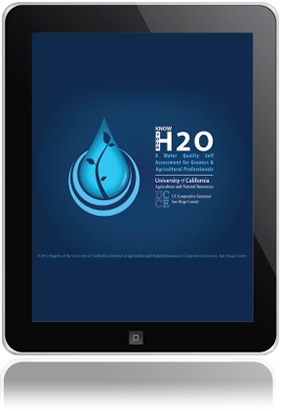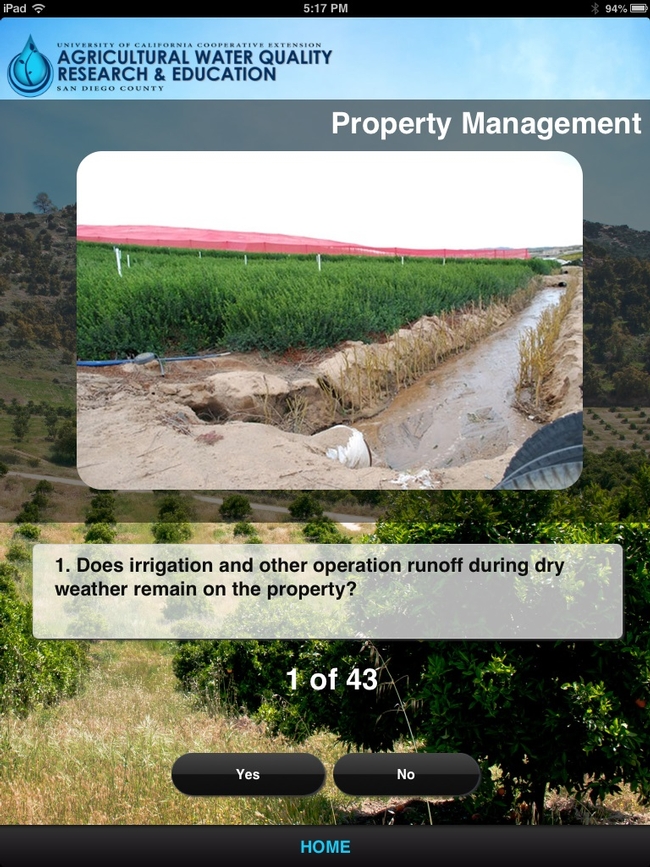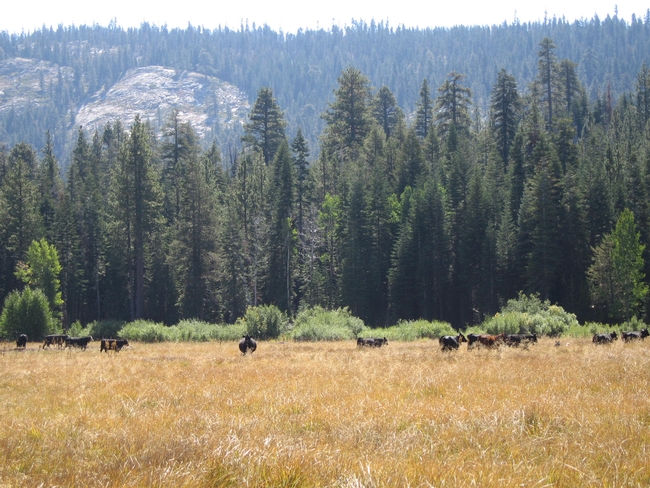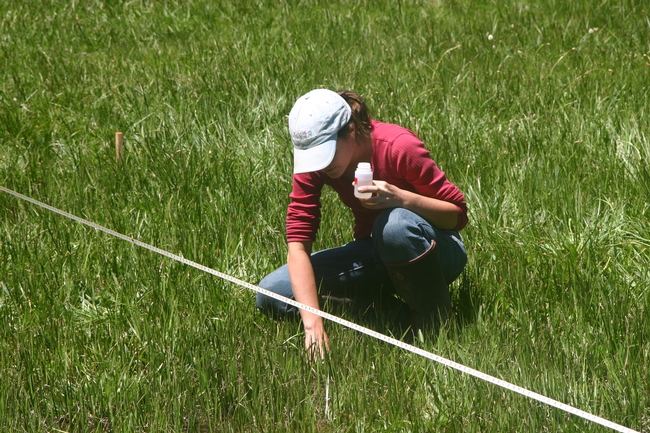Posts Tagged: Water
Why Honey Bees Need Water
Ever seen honey bees foraging for water on your outdoor clothesline? When Extension apiculturist Eric Mussen of the University of California, Davis,...
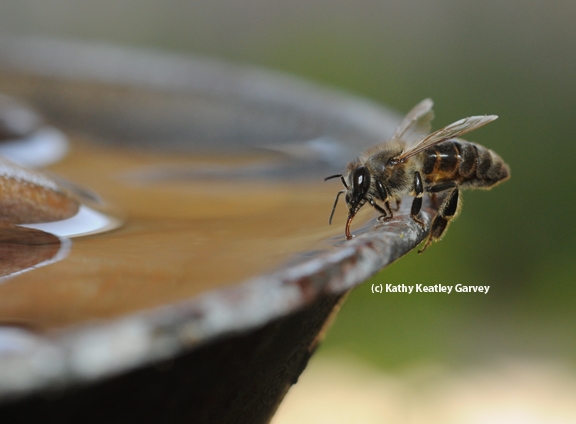
A Carniolan honey bee sipping water from a fountain. (Photo by Kathy Keatley Garvey)
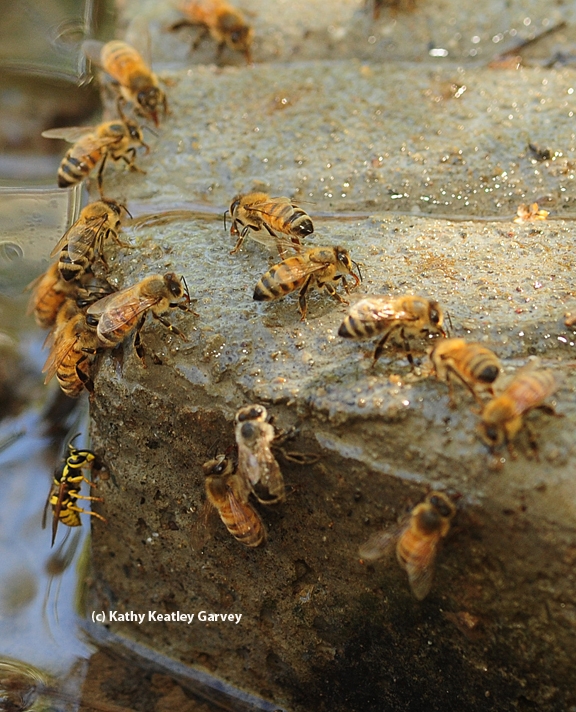
A yellowjacket joins honey bees in seeking water. (Photo by Kathy Keatley Garvey)
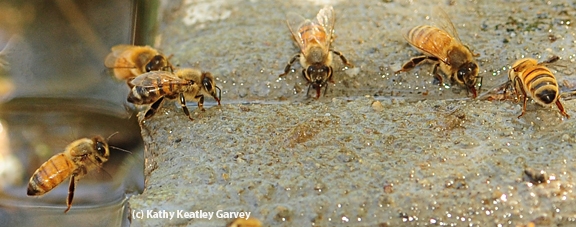
A honey bee, caught in flight, ready to join her sisters in gathering water. (Photo by Kathy Keatley Garvey)
Got Ants? Get S.E.R.I.O.U.S.
There is a new resource available to anyone that has dealt with ants. It is a website called Got Ants? Get S.E.R.I.O.U.S.! It is as they say on their website “a collaboration of public agencies, educational institutions, pest professionals, and nonprofits working to promote environmentally sound ant management and to protect water quality.” You may or may not know that the pesticides commonly used for ant control are some of the most prevalent and damaging in our waterways. People spray them on their own or hire companies to do it for them. The truth of the matter is that spraying is not the most effective or cost effective means of controlling ant invasions. The Got Ants folks have put together a very simple system for dealing with ants. Their acronym S.E.R.I.O.U.S. stands for:
S – Spot where ants are coming in.
E – Eliminate crumbs, messes and spills
R – Rinse with soap and water
I – Isolate food and water sources
O – Obstruct entryways and seal cracks
U – Use baits if ants don’t go away
S – Stick to it to keep ants away
In addition to strategies for handling ant invasions the Got Ants website asks you to make a pledge “to use less toxic practices (or hire a company certified to provide less toxic IPM services) the next time you have an ant problem.” I’ve added my name to the list. I encourage you to do the same.
By the way, if you want to read a synopsis of a study done by Stanford researchers that indicates that ant invasions, and more importantly, their retreat are due to weather, I'm including the link. As stated in the article; "People spend a lot of money on year-round pesticides," says Deborah M. Gordon, associate professor of biological sciences and lead author of the study, "but it's not the pesticide that keeps ants out of your home, it's the weather."
http://news.stanford.edu/pr/01/ants45.html
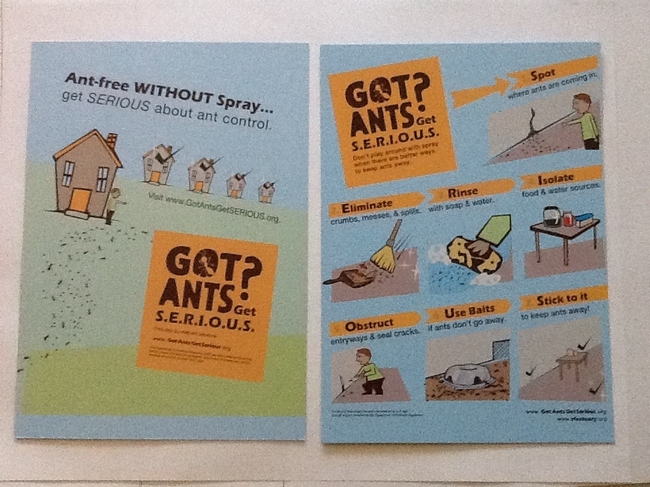
photo(39)
Mighty Mites on a Damselfly
It pays to have a pond. A pond attracts dragonflies and damselflies. Last weekend, though, we spotted a damselfly a good 65 feet away from our...

Damselfly, with water mites attached, lands on the leaf of a passion flower vine. (Photo by Kathy Keatley Garvey)
Mobile app helps growers protect water quality
Although there are many sources of water pollution, runoff from farms may contain contaminant levels that exceed water quality standards. Runoff from agricultural operations can pick up and carry natural and man-made pollutants, including fertilizers, salts, pesticides and sediments to lakes, rivers, wetlands and beaches, according to Loretta M. Bates, UC Cooperative Extension staff research associate, who leads the Agricultural Water Quality Research and Education Program in San Diego County.
Avocados and citrus are major tree crops in San Diego County, but “the app should be useful for growers of any tree crops,” says Bates.
The self-assessment questions fall into the following categories:
A. Property Management
B. Road Management & Erosion Control
C. Irrigation Practices
D. Leaching & Runoff
E. Nutrient Assessment & Fertilizer Management
F. Integrated Pest Management
“In the near future, we will have apps available for nursery and greenhouse growers and the apps will be available for use with devices other than iPads,” Bates says.
The tree crops app was developed by Ryan Krason, digital media specialist for UC Cooperative Extension in San Diego County, and Valerie Mellano, former UC Cooperative Extension advisor in San Diego County, with a third-party app developer. Krason and Bates are currently working on customizing the app for nursery and greenhouse operations.
The iPad app for tree crops is free and can be downloaded from the iTunes store. Search for "agricultural water quality."
For tree crop growers who don’t have iPads, the self-assessments can be printed off the Web at http://ucanr.org/sites/agwaterquality/files/121819.pdf and completed by hand. The Agricultural Water Quality Research and Education Program also offers printable self-assessments for greenhouse and nursery businesses and animal agriculture operations on the Web. While the iPad app will generate a report of suggestions, the print versions offer statements that address a group of questions.
For more information about the UC Cooperative Extension Agricultural Water Quality Research and Education Program, its iPad water-quality self-assessment app or other online assessment tools, visit http://ucanr.edu/sites/agwaterquality/Grower_Resources.
Cattle grazing and clean water not mutually exclusive
Cattle grazing and clean water can coexist on national forest lands, according to research by the University of California, Davis.
The study, published June 27 in the journal PLOS ONE, is the most comprehensive examination of water quality on National Forest public grazing lands to date.
“There’s been a lot of concern about public lands and water quality, especially with cattle grazing,” said lead author Leslie Roche, a postdoctoral scholar in the UC Davis Department of Plant Sciences. “We’re able to show that livestock grazing, public recreation and the provisioning of clean water can be compatible goals.”
Roughly 1.8 million livestock graze on national forest lands in the western United States each year, the study said. In California, 500 active grazing allotments support 97,000 livestock across 8 million acres on 17 national forests.
“With an annual recreating population of over 26 million, California’s national forests are at the crossroad of a growing debate about the compatibility of livestock grazing with other activities dependent upon clean, safe water,” the study’s authors write.
“We often hear that livestock production isn’t compatible with environmental goals,” said principal investigator Kenneth Tate, UC Cooperative Extension specialist in the Department of Plant Sciences at UC Davis. “This helps to show that’s not absolutely true. There is no real evidence that we’re creating hot spots of human health risk with livestock grazing in these areas.”
The study was conducted in 2011, during the grazing and recreation season of June through November. Nearly 40 UC Davis researchers, ranchers, U.S. Department of Agriculture Forest Service staff and environmental stakeholders went out by foot and on horseback, hiking across meadows, along campsites, and down ravines to collect 743 water samples from 155 sites across five national forests in northern California.
These areas stretched from Klamath National Forest to Plumas, Tahoe, Stanislaus and Shasta-Trinity national forests. They included key cattle grazing areas, recreational lands and places where neither cattle nor humans tend to wander.
UC Davis researchers analyzed the water samples for microbial and nutrient pollution, including fecal indicator bacteria, fecal coliform, E. coli, nitrogen and phosphorous.
The scientists found that recreation sites were the cleanest, with the lowest levels of fecal indicator bacteria. They found no significant differences in fecal indicator bacteria between grazing lands and areas without recreation or grazing. Overall, 83 percent of all sample sites and 95 percent of all water samples collected were below U.S. Environmental Protection Agency benchmarks for human health.
The study noted that several regional regulatory programs use different water quality standards for fecal bacteria. For instance, most of the study’s sample sites would exceed levels set by a more restrictive standard based on fecal coliform concentrations. However, the U.S. EPA states that E. coli are better indicators of fecal contamination and provide the most accurate assessment of water quality conditions and human health risks.
The study also found that all nutrient concentrations were at or below background levels, and no samples exceeded concentrations of ecological or human health concern.
The study was funded by the USDA Forest Service, Region 5.
The study has been covered by Bloomberg, Cattle Network, Progressive Cattle, Science Daily and AgWeb.


